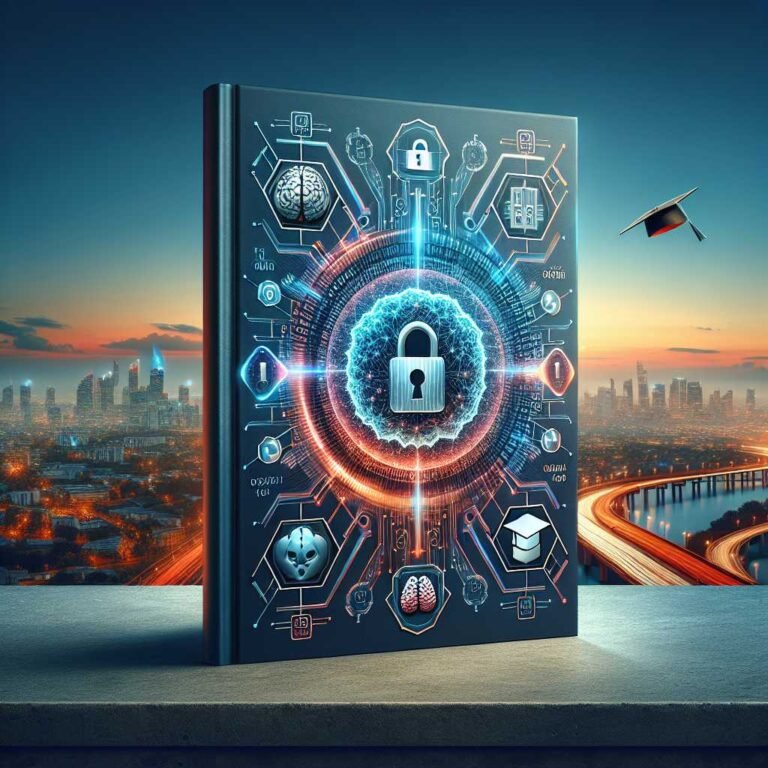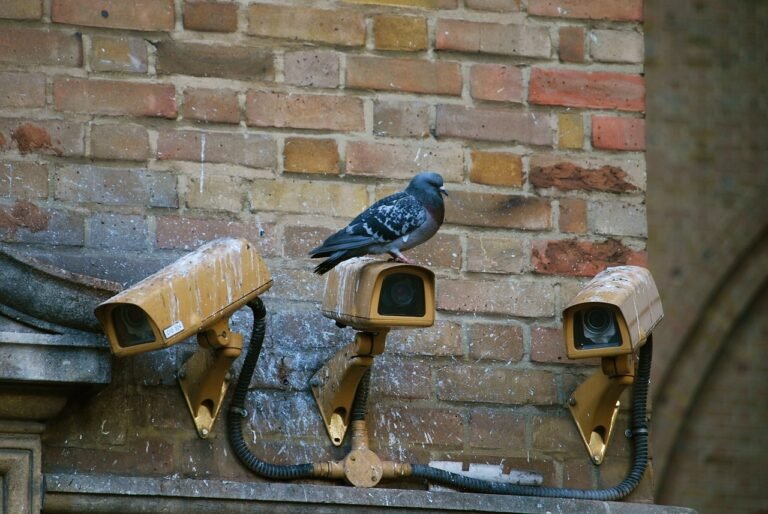Quantum Computing for Everyone: A Friendly, No-Jargon Guide to Qubits, Entanglement, and Algorithms (Inspired by Chris Bernhardt’s MIT Press Book)
What if you could understand quantum computing without a physics degree? If the words “qubits” and “entanglement” sound intimidating, you’re exactly who this guide is for. Inspired by Chris Bernhardt’s illustrated MIT Press book, Quantum Computing for Everyone (Paperback, September 8, 2020), this article breaks down the core ideas in clear, down-to-earth language—using only high school math.
Here’s the promise: by the end, you’ll not only grasp what qubits and quantum gates are, but you’ll also see why quantum computing isn’t a different species of computing—it’s the deeper foundation underneath it all. And that’s the big idea Bernhardt wants readers to take away.
Let’s dig in—one concept at a time.
What Makes “Quantum Computing for Everyone” Different
Chris Bernhardt is a mathematician, and it shows in the best way. Instead of drowning you in heavy physics, he uses simple math and small, concrete examples to reveal how quantum computation actually works. That’s what gives the book its power and accessibility.
Think of it as a bridge: – From classical bits to quantum bits (qubits). – From Boolean logic to quantum gates. – From “spooky action at a distance” to understandable entanglement. – From buzzwords to working mental models.
Who it’s for: – Curious readers comfortable with high school math (algebra, a little geometry). – Developers and data scientists eyeing the quantum space. – Students who want a first-principles understanding without the calculus.
If you want a taste of the broader field along the way, external resources like the open-source Qiskit Textbook and NIST’s Post-Quantum Cryptography project complement the book’s approach nicely.
A Quick Primer: Classical vs. Quantum Computing (and Why It Matters)
Classical computing uses bits—0s and 1s—that flip through logic gates to compute results. It’s powerful and universal.
Quantum computing uses qubits, which can be in a mix of 0 and 1 (called superposition) and can “link” with each other in a way that correlates outcomes when measured (entanglement). This different toolkit can sometimes produce huge speedups—especially for certain search, simulation, and cryptography problems.
Here’s why that matters: – Some problems—like simulating molecules—are inherently quantum. Classical computers struggle; quantum machines are native to the problem. – Certain algorithms (like Grover’s search) offer quadratic speedups; others (like Shor’s factoring) could break today’s cryptography. – Quantum doesn’t replace classical; it extends it. In practice, we’ll blend them.
Bernhardt’s thesis aligns with this: classical and quantum aren’t separate kingdoms. Quantum is the more general framework, and classical is a special case within it.
Qubits Explained: The Building Blocks of Quantum Computing
Let me explain what a qubit actually is—without the mystique. In classical computing, a bit is either 0 or 1. A qubit can be: – 0 with some probability, – 1 with some probability, – Or a “superposition” that mixes both until measured.
That mix is not hand-wavy. It’s precise and governed by complex numbers (yes, the i you saw in math class). If that sounds abstract, think of a qubit as a compass needle pointing somewhere on a sphere: – North and south correspond to 0 and 1. – Every other direction represents a different blend of 0 and 1 that we can manipulate with gates.
For a solid definition, the Wikipedia entry on qubits is helpful, but don’t get lost in the equations yet. The key point: a qubit is a controllable probability machine. We nudge its state with gates and then read out a 0 or 1.
Superposition: Why Quantum Feels Magical
Superposition means a qubit can hold “both” 0 and 1 at once in a precise, measurable way. In practice, we never see both on the screen. We see one result after we measure. But before measurement, the system evolves as if both states exist, and that evolution can interfere with itself—like waves overlapping.
Why that’s useful: – You can “spread” the computation over many paths in parallel. – Then you use interference to amplify the paths you want and cancel out the ones you don’t. – The result: more signal, less noise, faster answers.
Analogy: Imagine trying multiple keys in a lock at once. A classical machine tries them one by one. A quantum machine “tests” a structured blend of keys, then tilts the odds so the right one is far more likely to appear on measurement.
Entanglement Demystified: Correlation with a Quantum Twist
Entanglement is a special correlation that can’t be explained by classical variables. Two qubits become connected so that measuring one influences the outcomes of the other—no matter how far apart they are.
Here’s a practical way to think about it: – Entanglement is a resource. It lets gates act on many qubits in a coordinated way. – It’s key for quantum speedups and protocols like teleportation and superdense coding. – It’s not faster-than-light communication; it’s about correlated outcomes when measurements happen.
If you want a deeper dive without the heavy math, start with this explainer on entanglement. Then come back to how it powers computation.
Measurement: Where Probabilities Become Answers
All the magic happens before measurement. Once you measure a qubit, the state “collapses” to a definite 0 or 1. That’s why quantum algorithms are carefully choreographed: – Prepare a superposition. – Apply gates to shape interference. – Measure in the right basis to extract useful information.
The art is in designing those gates so that the right answer has a much higher probability of appearing.
Quantum Gates: The Tools of the Trade
Just as classical computing has AND, OR, and NOT gates, quantum computing has gates that rotate and entangle qubits. A few essentials: – Hadamard (H): creates superposition (turns a definite 0 into an even blend of 0 and 1). – Pauli X, Y, Z: fundamental flips and phase shifts—quantum analogs of NOT and rotations. – CNOT (Controlled-NOT): entangles one qubit with another based on control logic.
Think of these as “nudges” to the compass needle on the qubit sphere. Combine many gates, and you build a circuit. Circuits implement algorithms. Bernhardt keeps the math light and uses simple examples so you see what each gate does and why.
For a great visual-heavy supplement, check out the Qiskit Textbook’s intro to gates.
Quantum Algorithms the Book Helps You Understand
Bernhardt introduces the logic behind several foundational algorithms without drowning you in matrices. Here are the big ones you’ll likely encounter:
- Deutsch–Jozsa: A baby step into quantum advantage. It shows how quantum parallelism can answer certain yes/no questions in one shot.
- Grover’s Algorithm: Speeds up unstructured search from O(N) to O(√N). If you’re looking for a needle in a haystack, Grover turns a million guesses into about a thousand.
- Shor’s Algorithm (high level): The algorithm that made headlines. It factors large integers exponentially faster than the best-known classical methods—threatening today’s public-key cryptography. Implementing it at scale requires far more qubits and error correction than we have today, but the blueprint is there.
How these work under the hood: – Prepare a superposition over many possibilities. – Use the problem structure to create constructive interference for the right answers. – Use measurement to reveal the amplified results.
For approachable overviews, check Grover’s algorithm and Shor’s algorithm.
Quantum Cryptography: Security You Can Test
Bernhardt also covers quantum cryptography, especially BB84—the classic protocol for quantum key distribution (QKD). The premise: – Two parties exchange qubits prepared in random bases. – If an eavesdropper intercepts, they inevitably disturb the qubits. – Disturbance shows up as errors, tipping off the honest parties.
The result: You can detect eavesdropping in principle. That’s huge. It doesn’t encrypt everything magically by itself—but it helps create shared secret keys securely.
Parallel to that, the classical world is racing to move away from quantum-vulnerable encryption. To follow the standards effort, see NIST’s Post-Quantum Cryptography work, which selects new algorithms that are believed to be safe even in a world with powerful quantum computers.
The Hardware: How Quantum Computers Are Built Today
Here’s where engineering meets physics. Multiple technologies compete to build stable, controllable qubits:
- Superconducting Qubits: Tiny circuits cooled near absolute zero. Fast gate speeds, widely used by IBM and Google. See IBM Quantum for real devices you can try via the cloud.
- Trapped Ions: Individual ions held in electromagnetic fields. Extremely stable and precise, used by labs and companies like IonQ.
- Photonic Qubits: Qubits carried by photons. Attractive for networking and room-temperature operation.
- Neutral Atoms, Spins, and Others: Emerging approaches with unique trade-offs.
All face the same nemesis: noise and decoherence. Qubits are fragile, and errors creep in. That’s why error correction and fault tolerance are core research areas. The field is progressing fast, but we’re still in the “noisy intermediate-scale quantum” (NISQ) era—amazing demonstrations, limited depth.
For context and milestones, Quanta Magazine provides accessible reporting; for example, their coverage of quantum advantage is thoughtful and balanced: Quanta Magazine – Quantum Computing.
Why “Classical vs. Quantum” Is the Wrong Question
A central insight in the book is that quantum computing isn’t a parallel universe. It’s the more general framework of computation. Classical logic is embedded in quantum mechanics when you ignore phase and stick to a subset of operations.
Here’s what that means for you: – Classical algorithms still matter. They run most systems and coordinate quantum accelerators. – Quantum thinking expands what’s possible, not replaces everything you know. – Future systems will be hybrids: classical front ends orchestrating quantum back ends for the right problems.
That’s a more empowering perspective than “classical vs. quantum.” It’s “classical and quantum.”
What You Need to Read This Book (and Truly Get It)
You don’t need advanced physics. You do need: – Comfort with high school algebra (solving equations, manipulating variables). – A willingness to think in probabilities. – Openness to complex numbers (a quick refresher helps, but you can pick it up as you go).
Helpful prep resources: – Complex numbers refresher: Khan Academy has short, approachable lessons. – Intro to qubits with visuals: Qiskit Textbook. – Entanglement intuition: Quantum entanglement overview.
Tip: Keep a notebook. Work through the examples with a pencil. Quantum concepts “click” when you manipulate small states and see patterns.
How to Get Hands-On Without Buying Hardware
Reading is great; playing is better. Try this plan: 1. Read a chapter on qubits and gates. 2. Open a simulator and implement the gates (Hadamard, CNOT) on 1–2 qubits. 3. Visualize states and probabilities; run measurements many times. 4. Recreate a simple algorithm (Deutsch–Jozsa or a toy version of Grover). 5. Compare your simulator outputs with what you predicted on paper.
Where to experiment: – IBM’s free devices and simulators: IBM Quantum. – Qiskit tutorials for coding circuits: Qiskit Textbook. – For broader context and math guides: MIT OpenCourseWare – Quantum Computation (more advanced, but great lectures).
Pros and Cons: A Balanced Take on Bernhardt’s Approach
What the book does exceptionally well: – Keeps the math gentle but meaningful. – Uses clear, small examples to demystify gates and circuits. – Grounds algorithms in intuition instead of hype. – Frames quantum as fundamental computing, not a fad.
Where you might want supplements: – Code and real-device practice: Pair with a hands-on resource like the Qiskit Textbook. – Hardware depth: For qubit physics and engineering trade-offs, add tutorials or lectures from IBM or university courses. – Latest developments post-2020: For breakthroughs and debates (like error-corrected milestones), skim Quanta Magazine’s quantum computing coverage.
Bottom line: If you want a first-principles, math-light on-ramp, it’s hard to beat.
Key Ideas You’ll Walk Away With
- Qubits and superposition are precise, controllable tools—not mystical fog.
- Entanglement is a usable resource that powers speedups and secure protocols.
- Quantum algorithms shape interference to amplify right answers.
- Quantum and classical computing are part of one continuum.
- Today’s hardware is noisy, but progress is steady—and the theory is powerful now.
Here’s why that matters: whether you’re a developer, a student, or a curious reader, this understanding helps you separate real progress from hype, and it prepares you to engage with quantum tools as they mature.
Practical Use Cases: Where Quantum Will Matter First
We’re not at the app store era yet, but promising use cases are taking shape: – Chemistry and materials simulation (drug discovery, batteries, catalysts). – Optimization with quantum-inspired or hybrid algorithms (logistics, finance). – Secure communications and key distribution (QKD), plus quantum-safe crypto transitions. – Machine learning research exploring quantum kernels and hybrid models.
If you’re planning a career move or R&D investment, track real benchmarks and roadmaps from lab groups and companies, not just press releases. IBM’s quantum roadmap gives a taste of targets and timelines.
A Mini Glossary You’ll Actually Use
- Qubit: Quantum version of a bit; can be in superposition.
- Superposition: A blend of 0 and 1 states before measurement.
- Entanglement: Non-classical correlation between qubits.
- Gate: Operation that changes a qubit’s state (e.g., H, X, Z, CNOT).
- Circuit: A sequence of gates; implements an algorithm.
- Interference: Waves add or cancel—used to amplify right answers.
- Measurement: Converts a qubit to a definite 0 or 1 with some probability.
- NISQ: Noisy, intermediate-scale quantum—today’s era of hardware.
If You’re Short on Time, Read This
- Quantum computing isn’t magic. It’s math and circuits with new rules.
- You can learn the basics with high school math and a curious mind.
- Bernhardt’s book is an excellent starting point that respects your time.
- Complement it with hands-on practice via Qiskit and keep an eye on NIST’s post-quantum standards.
FAQs: People Also Ask
Q: Do I need advanced math or physics to understand quantum computing? A: No. High school algebra and basic probability are enough to get started. Bernhardt’s approach builds intuition first. If you’re rusty on complex numbers, a quick refresher is plenty.
Q: What’s the difference between a bit and a qubit? A: A bit is 0 or 1. A qubit can be a superposition—a blend that evolves according to quantum rules—until measured. That enables interference, the key to quantum speedups. Learn more here: Qubit.
Q: Is quantum computing faster than classical for everything? A: Not at all. Quantum offers speedups for specific problems with the right structure (e.g., factoring, certain searches, quantum simulations). Many tasks remain best on classical machines.
Q: Will quantum computers break all encryption? A: If we had large, fault-tolerant quantum computers, algorithms like Shor’s could break widely used public-key schemes (RSA, ECC). That’s why NIST is standardizing quantum-resistant algorithms now: Post-Quantum Cryptography.
Q: What can I do on a quantum computer today? A: You can run small circuits on cloud-accessible devices, experiment with algorithms on simulators, and learn the gate model. Try IBM’s free platform: IBM Quantum.
Q: Does “Quantum Computing for Everyone” include programming? A: It focuses on concepts and math-light intuition more than code. Pair it with the Qiskit Textbook for hands-on practice.
Q: Which quantum algorithms should beginners learn first? A: Start with superposition and interference using the Hadamard gate, then try Deutsch–Jozsa and Grover. Read a high-level overview of Shor’s algorithm for context.
Q: How far are we from practical quantum advantage in the real world? A: Researchers have shown advantages on contrived tasks. Broad, error-corrected, real-world advantage is still in development. Follow measured updates from labs, vendors, and sources like Quanta Magazine.
Q: Is quantum computing a replacement for classical computing? A: No. Think “accelerator.” Quantum will complement classical systems for specialized tasks where it shines.
Q: What’s the best way to study this topic without getting overwhelmed? A: Build a loop: read a concept, sketch a tiny example, simulate it, and explain it back in plain English. Small steps, lots of repetition.
The Takeaway
Quantum computing becomes far less mysterious when you see it as computing with new rules, not as science fiction. Chris Bernhardt’s Quantum Computing for Everyone excels because it puts intuition first, math at a gentle level, and hype in the rearview mirror.
Actionable next steps: – Read an introductory chapter and write out a one-qubit circuit by hand. – Run the same circuit in a simulator via the Qiskit Textbook. – Skim NIST’s post-quantum updates to understand the real-world stakes. – Keep exploring—if this guide helped, consider subscribing for more practical, jargon-free explainers on quantum, AI, and the future of computing.
Discover more at InnoVirtuoso.com
I would love some feedback on my writing so if you have any, please don’t hesitate to leave a comment around here or in any platforms that is convenient for you.
For more on tech and other topics, explore InnoVirtuoso.com anytime. Subscribe to my newsletter and join our growing community—we’ll create something magical together. I promise, it’ll never be boring!
Stay updated with the latest news—subscribe to our newsletter today!
Thank you all—wishing you an amazing day ahead!
Read more related Articles at InnoVirtuoso
- How to Completely Turn Off Google AI on Your Android Phone
- The Best AI Jokes of the Month: February Edition
- Introducing SpoofDPI: Bypassing Deep Packet Inspection
- Getting Started with shadps4: Your Guide to the PlayStation 4 Emulator
- Sophos Pricing in 2025: A Guide to Intercept X Endpoint Protection
- The Essential Requirements for Augmented Reality: A Comprehensive Guide
- Harvard: A Legacy of Achievements and a Path Towards the Future
- Unlocking the Secrets of Prompt Engineering: 5 Must-Read Books That Will Revolutionize You







